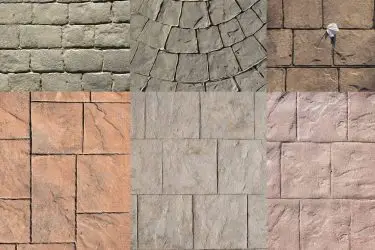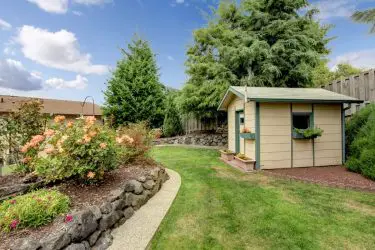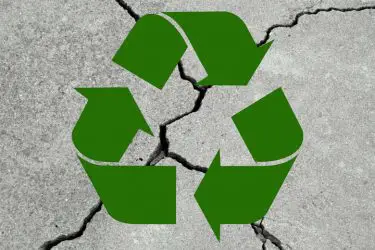On the surface, both concrete and mortar are materials that appear to be the same. They both are mixtures of water, cement, and aggregate. Why, then, are each used in such drastically different projects? It really all comes down to how the concrete and mortar are mixed, how much water is used, and what kind of aggregate.
The main differences between concrete and mortar are that concrete is mixed with a lower water-to-cement ratio, and has large and coarse aggregate added, making it stronger. Mortar is weaker, has a higher water-to-cement ratio, finer aggregate, and is used to paste bricks, blocks, or tiles together.
There are different types of mortar just like there are different types of concrete. Both are not interchangeable. For example, you can’t use concrete to paste bricks together and you can’t pour mortar into the footing and foundation of a large office building.
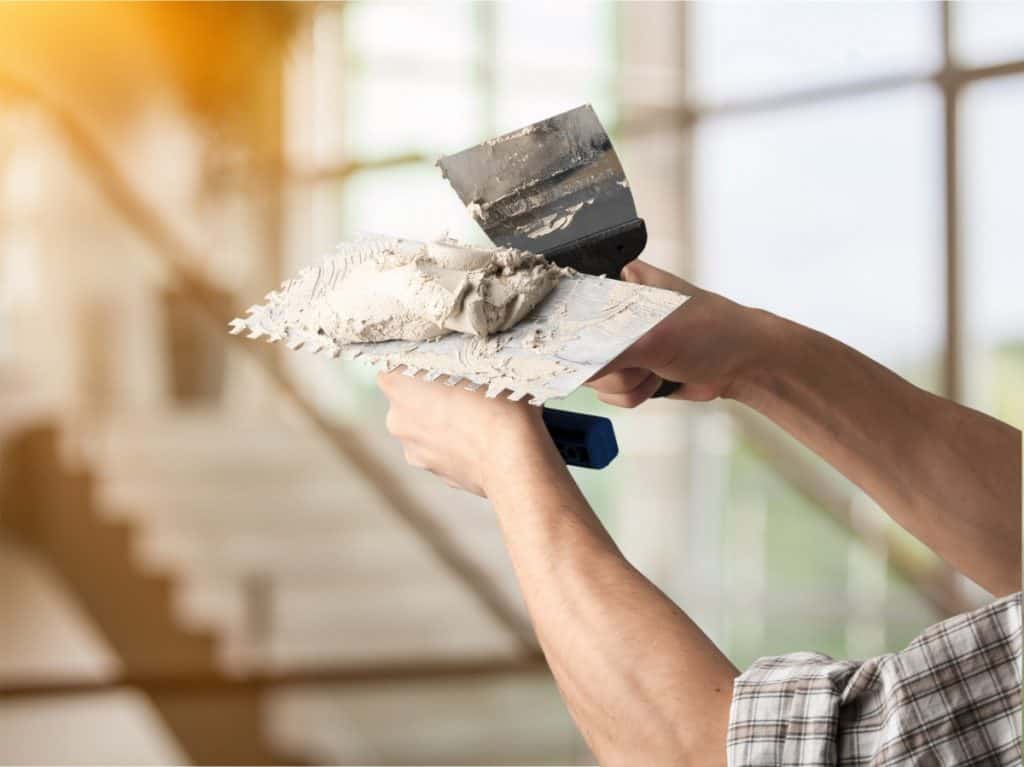
Table of Contents
The Difference Between Cement, Concrete, and Mortar
These three terms can often be used interchangeably by those who are not familiar with their composition and how they’re made. All three of them are used in masonry as either binding or building materials. However, they are each have different purposes and overall compositions.
Cement is a binding material that is also known as “Portland Cement” named after the white stone quarries on the island of Portland, England.
Joseph Aspdin was a nineteenth-century English mason who patented his invention and named it after the quarries because of how similar the cement’s color was to the quarry.
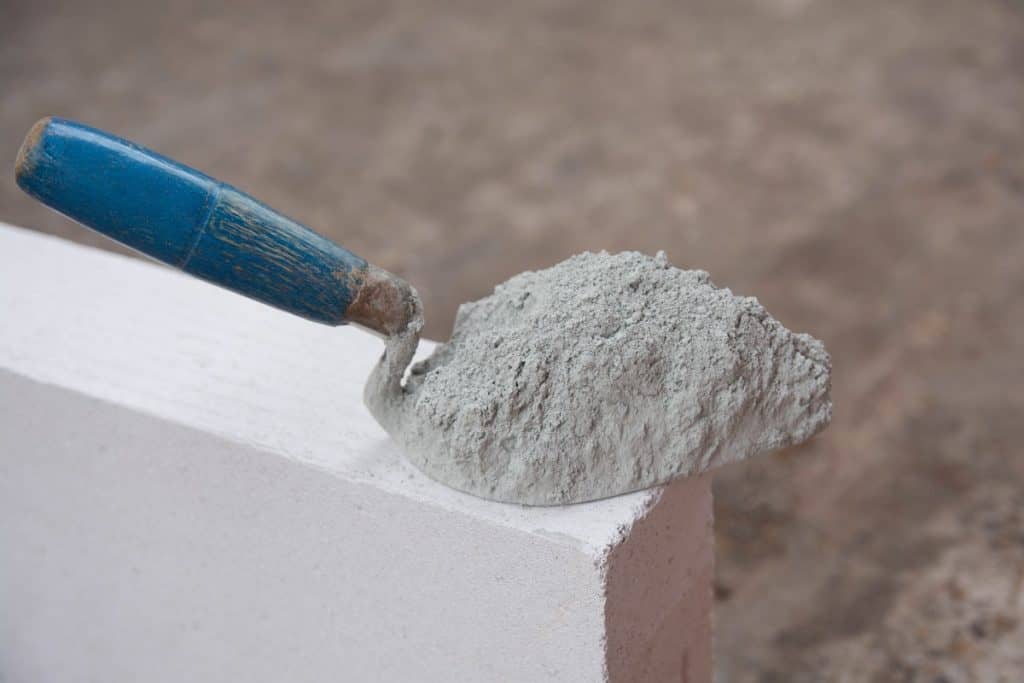
Portland Cement is made mostly of limestone with other combinations of chemicals like calcium, silicon, aluminum, and iron. It also contains shells, chalk combined with shale, clay, slate, slag from blast furnaces, sand, and iron ore.
It is “hydraulic,” which means that the chemicals in its mixture will harden once water is added.
Cement is almost never used by itself and is a supplementary binding material added in both concrete and mortar mixes.
It can also be added to materials like stucco, grout, and other adhesives.
Concrete is a thicker, stronger material that makes use of Portland Cement, water, and coarse or fine aggregates such as sand, rocks, or gravel. Concrete is the most common building material around the world and is trusted for constructing sidewalks, patios, buildings, and even skyscrapers.
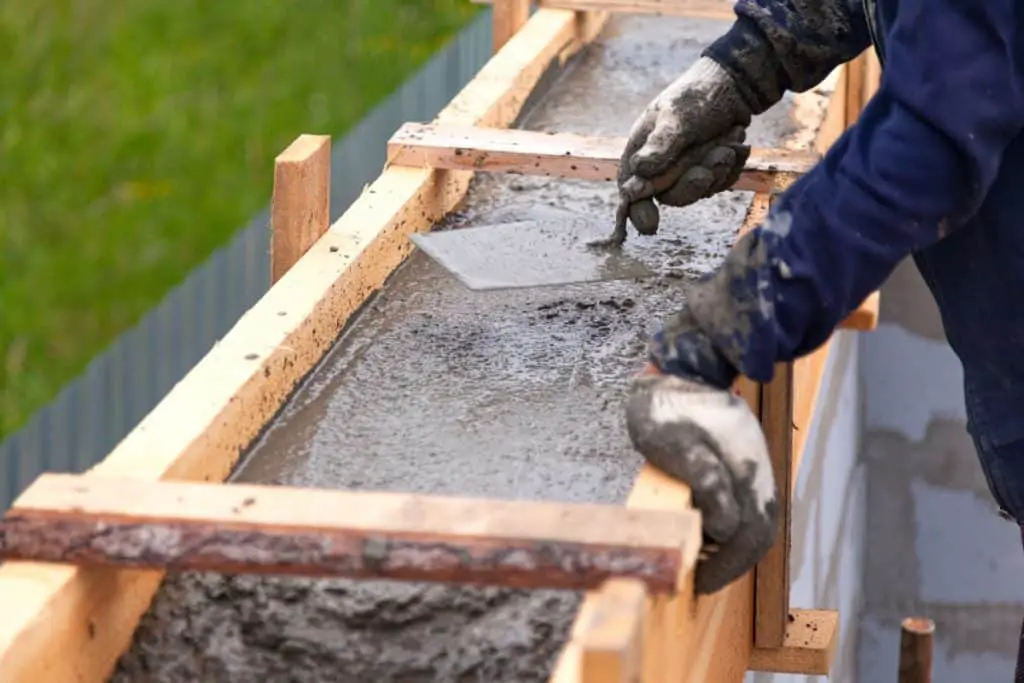
The history of concrete goes back almost to the stone ages when ancient tribes in the middle east used a type of concrete to build housing structures and cisterns. Over the years, the knowledge of concrete was lost and found but has never been as widely used as it is today.
Using an almost infinite amount of ingenuity, engineers nowadays can form concrete into almost any size or shape. Since concrete will continue to harden over time, it is extremely durable and boasts rock-like compressive strength.
Manufacturers package it with “ready-mix” bags that need only water before it can be poured anywhere.
Below is a list of the different kinds of applications concrete is used for:
- Buildings (footings, foundations, etc.)
- Walls and floors
- Bridges
- Roads
- Dams
About 7.5 billion cubic meters of concrete are manufactured every year. Manufacturers design concrete with a compressive strength anywhere between 2,000 psi and 6,000 psi. 4,000 psi is the minimum strength for structures like sidewalks.
Mortar, on the other hand, is a weaker material that resembles concrete in its composition but has a completely different use.
It uses Portland Cement, a higher amount of water than concrete, and very fine sand as aggregate. One might say that mortar is a very weak form of concrete.
It’s technically thicker than concrete which allows for excellent adhesion on certain objects.
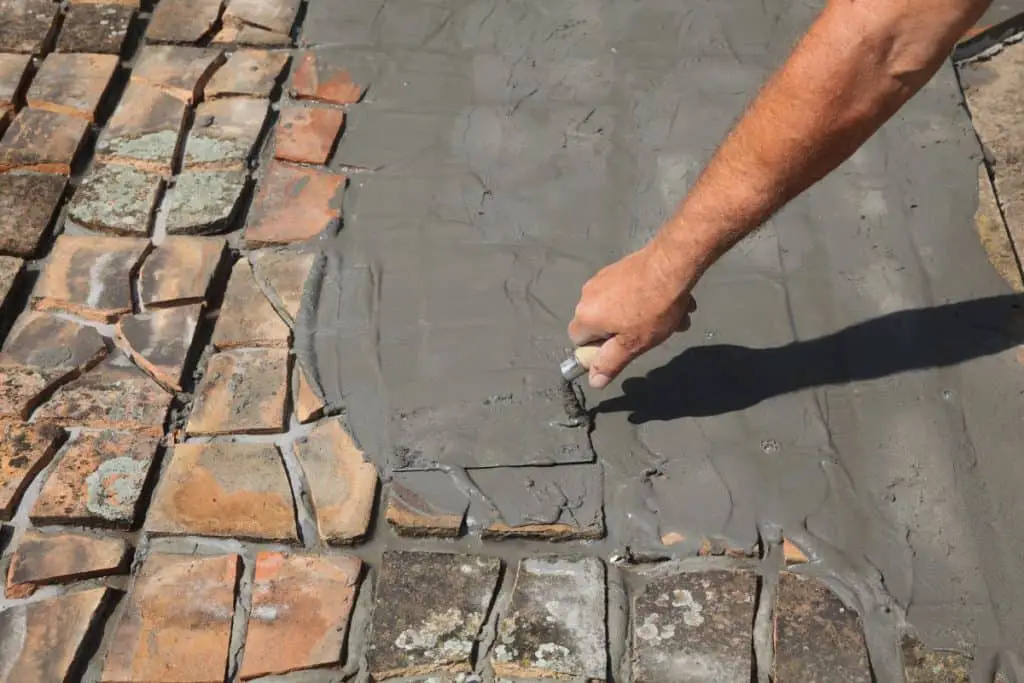
Some have compared mortar to grout, which has almost the same ingredients as mortar, minus the lime.
Grout is distinguished from mortar in that, in the case of floor or wall tiles, mortar is used to attach the tile to the surface while grout is used to fill in the gaps between tiles.
These gaps are known as “joints.”
Manufacturers design mortar with compressive strengths between 1,000 psi and 3,500 psi. These numbers are not large enough to be used on bigger constructions like driveways.
The following materials are what mortar is used for, whether it’s for adhesion or a repairing project:
- Bricks
- Tiles
- Blocks
- Pillars
- Walls
- Planters
Types Of Mortar
Five different types of mortar can be used in different situations and projects. Below is a table of the different mortar types from strongest to weakest and how many parts Portland Cement, sand, and lime each need.
| Mortar Types | Portland Cement | Sand | Lime |
|---|---|---|---|
| M | 1 | 3-1/2 | 1/4 |
| S | 1 | 4-1/2 | 1/2 |
| N | 1 | 6 | 1 |
| O | 1 | 9 | 2 |
| K | 1 | 12 | 3 |
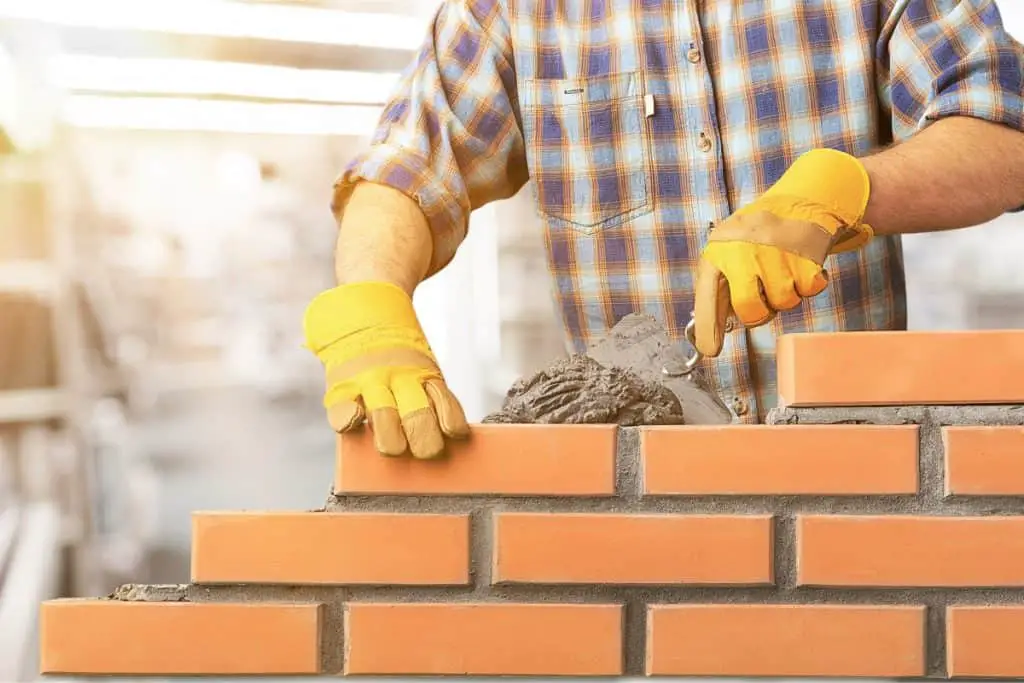
Type M
The Type M mortar is the strongest and has a psi strength of at least 2,500. While this is the strongest type of mortar, it is not strong enough to replace concrete.
It’s used primarily when dealing with a hard stone. Because of its strength, Type M is not as workable as other types of mortar and is not the go-to mortar for most general uses around the house.
Some uses include:
- Heavy loads
- Below ground (or, “below grade”)
- Some foundation applications
- Some driveway applications
Type S
This type is the second to highest mortar in terms of compressive strength. It has a minimum psi of 1,800 and has a higher tensile strength than other mortar types.
It can withstand both wind and seismic pressures and does well underground
Some uses include:
- Below-grade exterior structures
- Patios
- Manholes
- Sewers
- Some foundation applications
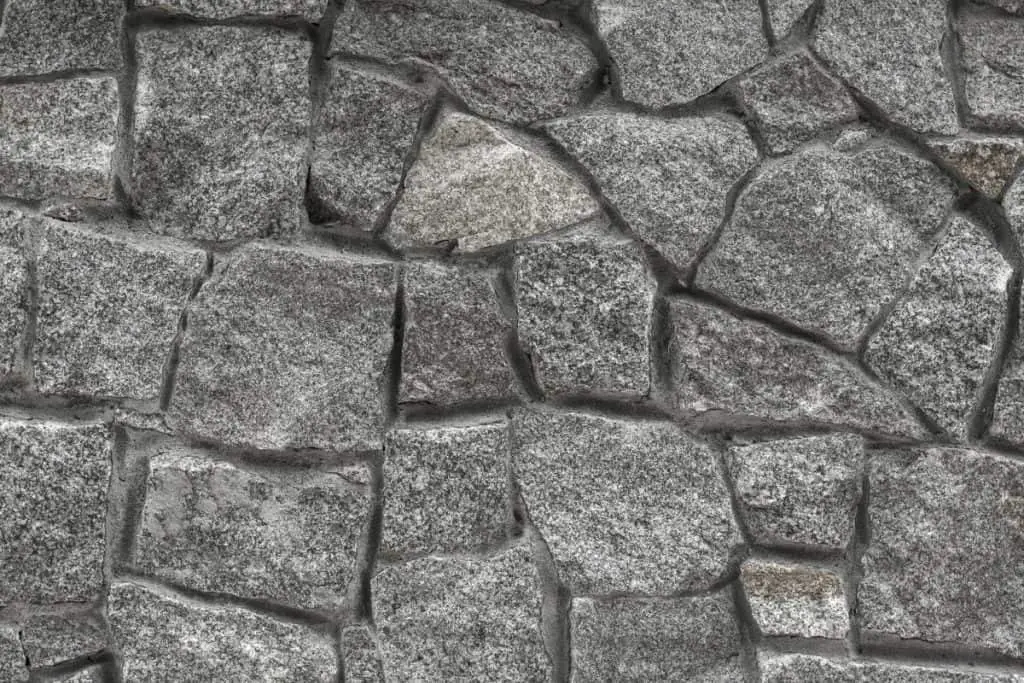
Type N
The first type of mortar is the more common, general-use type that is recommended for use on outside or inside walls and walls that are raised above the level of the earth (or, “above grade”).
Homeowners and laymen can use this type of mortar on walls that are exposed to heat and all kinds of weathering. This type of mortar only has a medium-strength of at least 750 psi.
Some uses include:
- Medium loads
- Above grade uses
- Exterior and interior applications
- Soft stone masonry
Type O
Type O mortar has a minimum psi of 350 and is a much weaker mix used mostly for interior applications.
This type is not recommended for use in new constructions or to repair any unit that isn’t already structurally sound. It also does not stand well against high winds or seismic activity.
One use includes:
- Repointing (or touching up) on existing mortar joints. (It’s important not to use mortar that is harder than the existing mortar when repointing since the harder mortar can cause spalling or cracking on the existing brick.)
Type K
This type is the weakest and rarest of all the mortar types with a minimum psi of 75. Most will not have to worry about this type of mortar since it has no bearing capacity whatsoever.
However, it is used to preserve historical sites or anything fragile that can get damaged easily with stronger mortar.
Strength And Durability
The reason why there is such a difference between concrete and mortar comes down to utilization. Concrete is used for larger, heavier constructions while mortar is used for smaller, lighter ones.
However, many might ask why concrete can’t be used in place of mortar. This is an excellent question.
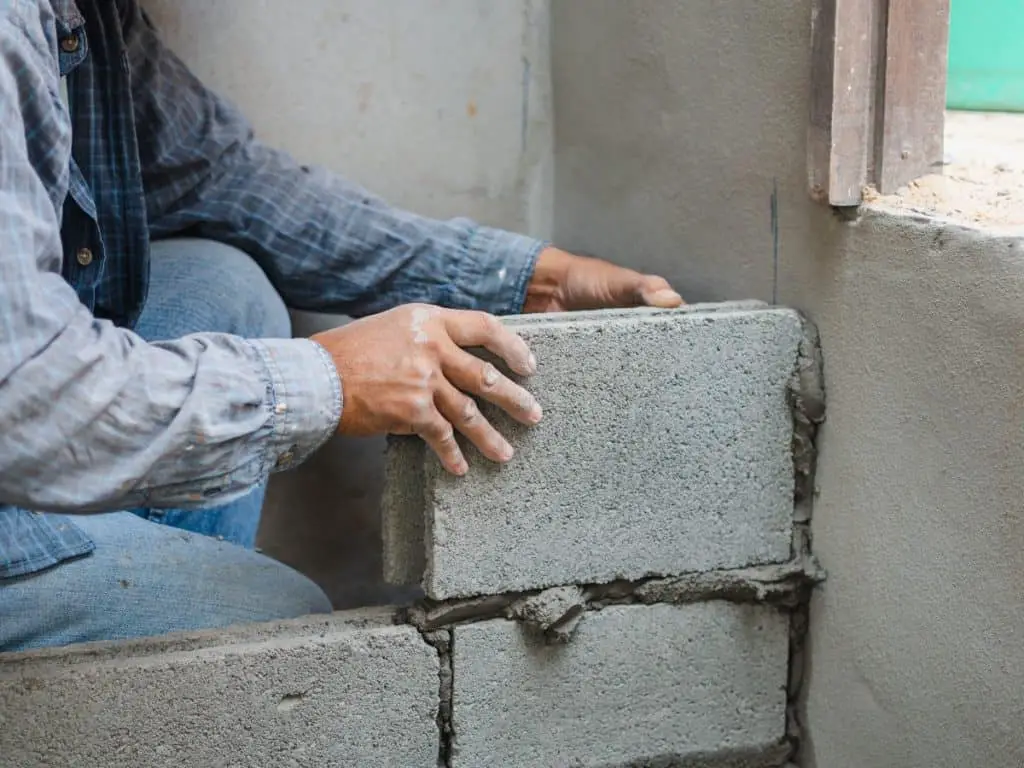
While concrete is stronger than mortar, using it in some brick or block walls would not be useful for one main reason. That is that concrete is too strong.
For example, say you make a brick wall with concrete. Concrete is designed to become rock-hard. If a brick wall shifts, the concrete will break the bricks along with it and you will need to build a new wall.
However, a wall built with mortar will only break at the mortar joints, which are weaker than the bricks.
All you’ll need is to add more mortar. Simple, easy, and affordable. One of the main reasons why concrete and mortar have their place in masonry.

